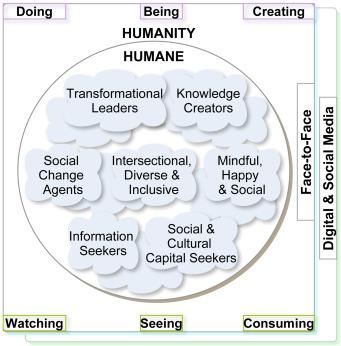Essential Strategies for Assessing Student Performance in Online Settings
As education continues its digital transformation, instructors and institutions face new challenges in evaluating student achievement through online learning platforms. Assessing student performance in online settings requires a strategic blend of technology, pedagogy, and personalized feedback methods. In this comprehensive guide, we explore the essential strategies for online assessment, sharing practical tips, benefits, expert insights, and real-world examples to help educators achieve accurate and meaningful evaluation.
Why Online Student Assessment Matters
With the growing adoption of virtual classrooms, the need for effective online assessment methods has never been greater. Accurate evaluation influences academic growth, motivates learners, and informs instructional decisions. In virtual settings, traditional assessment strategies may fall short, requiring adaptations to meet the unique demands of remote learners. Here’s why optimizing online assessment is crucial:
- Promotes Active Learning – Interactive assessments engage and motivate students.
- Enhances Adaptability – Online assessments cater to diverse learning styles and schedules.
- Improves Feedback Timeliness – Technology streamlines the feedback process, offering immediate results.
- Supports Data-Driven Decision Making – Digital platforms allow for robust tracking and analytics.
- Ensures Academic Integrity – Modern tools help mitigate cheating and plagiarism.
Core Strategies for Assessing Student Performance in Online Settings
Effective assessment in online environments requires intentional design and execution. Below are proven strategies to help educators accurately measure student learning and foster continual growth:
1. Diversify Assessment Formats
Relying solely on traditional tests and quizzes can limit student engagement and fail to capture true learning depth. Consider integrating the following online assessment methods:
- Discussion Forums & Peer Reviews – Promote collaborative learning and critical thinking.
- Project-Based Assignments – Allow students to apply theoretical concepts in practical ways.
- Online quizzes with Varied Question Types – Mix multiple-choice, short response, and scenario questions.
- Portfolios & Reflective Journals – Encourage self-assessment and long-term growth.
- Live Presentations & Video Submissions – Assess dialog and understanding.
2. Prioritize Formative Assessments
Formative assessments provide ongoing feedback, helping students identify strengths and areas for improvement throughout a course. Strategies include:
- weekly concept checks via quizzes or polls
- Feedback loops through annotated assignments
- Quick surveys to gauge understanding after modules
- Small group activities and breakout room tasks
3. Leverage Technology for Automated and Adaptive Assessments
Online learning platforms offer powerful tools to deliver and track student assessments.Key technologies include:
- LMS Gradebook Integration – Automatically records scores and tracks progress.
- Adaptive Testing – Adjusts questions based on student responses for personalized measurement.
- Plagiarism Detection Software – Ensures authenticity of submitted work.
- Analytics Dashboards – Provides insights on student engagement and performance trends.
4. Ensure Accessibility and Inclusivity
Design online assessments that are accessible to students with different backgrounds and abilities:
- Offer multiple submission formats (text,video,audio)
- Use clear,jargon-free instructions
- Support screen readers and mobile compatibility
- Accommodate timing needs for students with disabilities
5. Foster Academic Integrity in a Remote Environment
- Employ randomization and question banks to create unique assessments
- utilize proctoring software when necessary
- Educate students on ethical practices and consequences
- Incorporate open-book and authentic assessments when suitable
Benefits of Effective Online Student Assessment Strategies
- Improved Learning Outcomes – Students receive tailored feedback, boosting achievement.
- Higher engagement – Varied assessment formats maintain interest and motivation.
- Scalability – Technology allows educators to manage assessment at scale.
- Transparent Grading – Automated processes reduce human error and bias.
- personalized Instruction – analytics empower educators to target individual needs.
Practical Tips for Implementing Online Assessment
- Start Small – Introduce one new assessment type at a time and optimize based on student feedback.
- Communicate Clearly – Explain assessment criteria, formats, and expectations ahead of time.
- Encourage Reflection – Ask students to reflect on their learning process and outcomes after assessments.
- Monitor and Adapt – Continually evaluate strategy effectiveness and remain open to new approaches.
- Balance Synchronous and asynchronous Assessments – Mix real-time and self-paced evaluations for inclusivity.
Case Study: Online Assessment Success in a University Setting
Example: At a major university, instructors transitioned to online learning during the pandemic. By embedding weekly formative quizzes, encouraging students to submit video presentations, and utilizing the LMS analytics dashboard, the faculty observed a 30% increase in student engagement and a notable reduction in dropout rates. Over 95% of students reported that varied assessments improved their motivation and understanding of course material.
Expert Insights: First-Hand Experience from Online Educators
“I’ve found that integrating peer assessments into my courses not only deepens understanding but also builds confidence among students. Using online rubrics and automated feedback tools has made the process seamless.”
— Dr. Miranda Lee, Online Instructor, EdTech University
“the flexibility of online assessments means I can reach students who are juggling work and family responsibilities. Providing multiple ways to demonstrate knowledge is key!”
— Prof. Ajay patel, Virtual Learning Specialist
Conclusion
Optimizing online assessment is essential for ensuring student success in digital classrooms. By diversifying evaluation methods, prioritizing formative feedback, leveraging technology, and fostering inclusivity, educators can accurately measure and enhance performance. As virtual education evolves, staying proactive with proven strategies for assessing student performance in online settings ensures that learning remains effective, equitable, and engaging for all.
If you’re seeking to upgrade your online assessment approach or wishing to learn more about effective strategies for virtual classrooms, bookmark this guide and share your experiences in the comments below!

